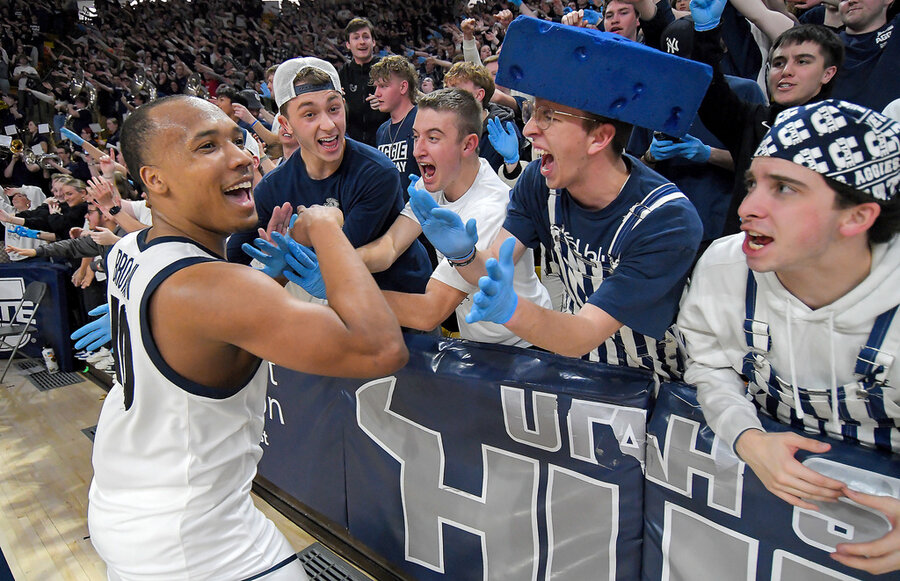Hoops of joy in March Madness
Loading...
In just a single weekend last March, the city of Albany, New York, received a sudden revenue bump large enough to cover nearly half of its annual budget for public works. Other small cities saw similar bursts in receipts. The reason: college basketball.
Spring migrations are underway – red-winged blackbirds to the north, baseball fans to the south. Yet nothing stirs a human fluttering this time of year quite like March Madness, the annual college basketball championship tournament. Over three weeks, 134 games – 67 for men’s teams, 67 for women’s teams – will generate nearly $10 billion in economic activity in the host cities.
The tournament draws fans to places they otherwise might never go. Many have no direct connection to the teams they root for. They hop from city to city, drawn by those things that inspire joy and empathy – athletic grace, gallantry, community. Every game risks it all. One team goes on; the other goes home.
“I more often than not, find myself rooting for the underdog team,” wrote Jillian Brown, an innovation consultant at Peer Insight. “One big reason is that we can see ourselves in this team. We’ve all been confronted with uphill battles, where we’re not expected to succeed but with passion and grit, we do.”
One explanation for the appeal of college athletics lies in the purity of its pursuit. Amateurism, wrote philosopher Heather Reid at Morningside University in Iowa, is rooted in the Latin word for love, or doing something out of intention and not for external reward. College sports teach “us to transform our love for an activity into excellence,” she wrote. They engage “uncommon character virtues.” Team sports are a “shared commitment to excellence.”
Nearly half of the NCAA teams make it to the national tournament by winning their regional championships. The rest are chosen by the National Collegiate Athletic Association on Selection Sunday, which happens this weekend. Then come the brackets, as fans fill in charts predicting winners and losers from the first round to the final game.
In the 85-year history of the tournament, no one has ever filled out a perfect bracket. But the brackets amplify the unique affections nourished by sports. Former Presidents George W. Bush and Barack Obama no longer debate policy in public. Now they playfully prod each other over their tournament predictions.
Games start Tuesday. On April 8, just one team will be left standing. During that three-week interval, a new survey by OnePoll found, the average fan will spend 36 hours watching, talking, and thinking about college basketball. About the stumbles, the Cinderellas, and the shots that beat the buzzer. It isn’t hard to see why. Love of excellence is a slam-dunk.





